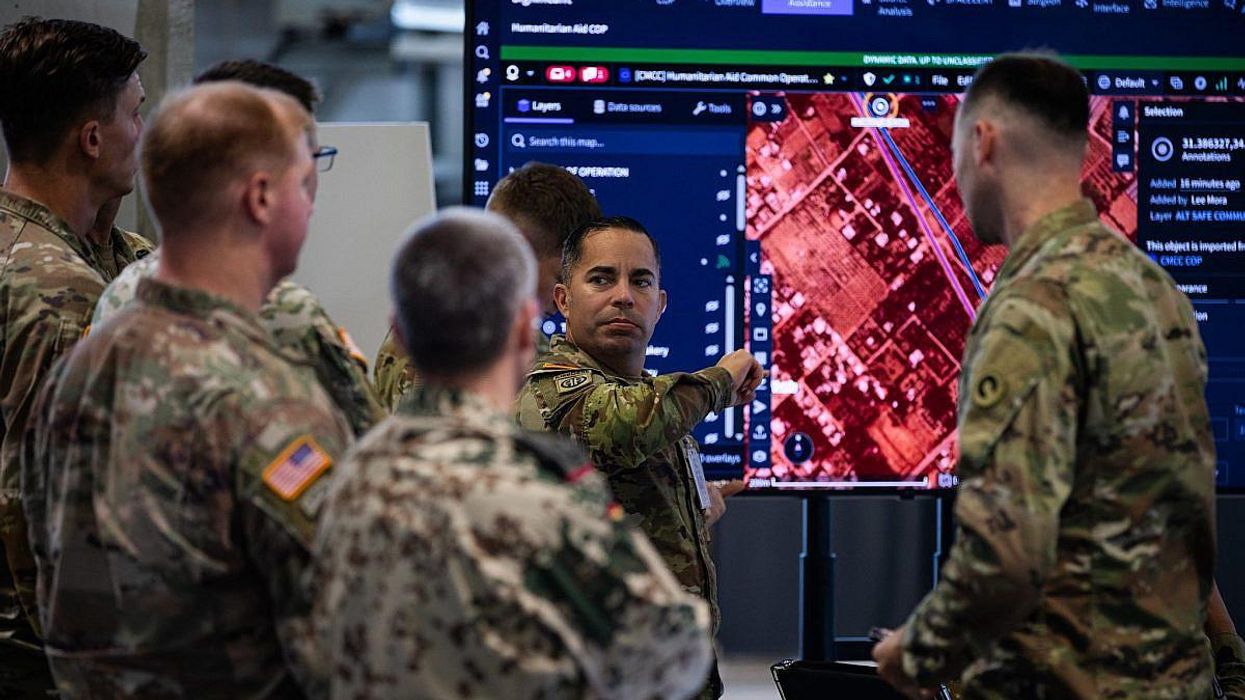The Ukrainian government will be deeply disappointed that the meeting of Western defense chiefs at Ramstein air base in Germany did not agree to give German-made Leopard 2 main battle tanks to Ukraine. The countries represented at the meeting, however, did promise to send a disparate collection of other arms. The United States has pledged an extra 59 Bradley infantry fighting vehicles and 90 Stryker light armored personnel carriers. Other countries are supplying artillery, ammunition, and anti-aircraft weapons.
Today's announcement brings the U.S. share up to nearly $27 billion over the course of the last year.
Germany, however, continues to refuse to send the Leopard tanks or to allow other countries that have previously bought the tanks (under conditions that require German permission for re-export) to do so. The Polish government has strongly condemned Berlin’s hesitation.
The German government has said that it will not do so unless the United States sends its own Abrams tanks (though the Biden administration has denied that this is a German condition). This the Biden administration has refused to do, citing the complex nature of the Abrams, the need for intense and specialized maintenance, and the length of time it would take to train the Ukrainians in their use. The objection has also been raised that supplying Ukraine with several different kinds of tanks, in addition to its original Soviet armor, would only cause confusion and inefficiency.
Britain is sending 14 Challenger tanks to Ukraine, and France is considering whether to send its Leclerc tanks. Given the limited size of European armored forces, the numbers of these available for supply to Ukraine by each country are very limited. The point about Germany supplying Leopards and allowing other NATO states to do so is that the Leopard is used by several different NATO armies, and so, if each supplies a limited number, that would still add up to a sizeable force — even if well short of the 300 tanks that Ukraine has requested. The Polish government has threatened that it might supply Leopards to Ukraine without Berlin’s permission, but that would put at risk its own future supply of spare parts from Germany.
In the end, the U.S. and German decisions on whether or not to send the tanks is not technical, but political. The Russian government has declared that NATO’s despatch of tanks would be a drastic escalation that would trigger unspecified but “unambiguously negative” consequences. “Potentially, this is extremely dangerous,” Kremlin spokesman Dmitri Peskov warned. “It will mean bringing the conflict to a whole new level which, of course, will not bode well from the point of view of global and pan-European security.”
The problem presented by this decision for NATO as an alliance, and for the U.S., German and French governments in particular, is that they do not actually know what they want in Ukraine. They have pledged to help Ukraine win, but have not decided what “victory” means. The Ukrainian, Polish, and Baltic governments know. They want the complete defeat of Russia, the reconquest of all the territory lost by Ukraine since 2014, and preferably the overthrow of the Putin regime and the break-up of the Russian state.
For cooler heads in Berlin, Paris, and Washington, this is a likely path to a NATO-Russia war and the possibility of mutual nuclear annihilation. Thus, the Biden administration is now being quoted as saying that it wishes Ukraine to be able to credibly threaten to take Crimea (which most Russians and most Crimeans regard as Russian territory that must be defended at all costs). At the same time, administration officials insist that this threat is intended to divert Russian troops, bring Russia to the negotiating table and make it willing to compromise, rather than to encourage Ukraine to actually attack Crimea. This is to put it mildly a complicated position, and a very difficult and dangerous line to negotiate — depending, as it would, on being able at a given point to persuade the Ukrainian army to stop.
As to the German government, it is caught between hostility toward Russia and respect for East European views held by many of its elites, and the deep inherited dread of European war and fear of economic depression among many ordinary Germans. In addition, generations of reliance on the United States in security issues have left Germany with neither the experience nor the will to undertake independent initiatives on critical international issues. A generous critic would say that, in its hesitation to give unconditional aid to Ukraine, the German government is simply responding to the deeply divided feelings of the German electorate. An unkind critic would quote Alexander Pope: “Willing to wound, but afraid to strike.”
















